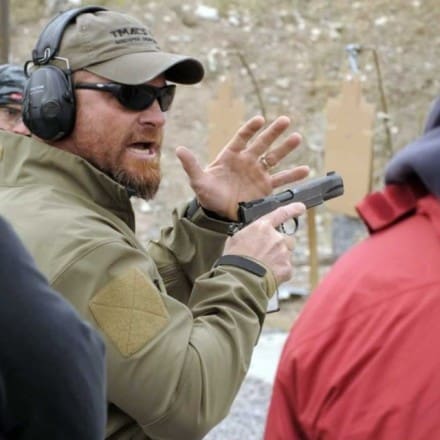I appreciate teaching Law Enforcement Officers and have a vested interest in doing so.
LEOs have a thankless job. They are damned if they do and damned if they don’t. They are in constant fear of litigation and liability and there is a law suit attached to every round they fire. They live in a world riddled with ambiguity where they must be the masters of adaptability. I like to define adaptability as; using your existing knowledge, have a positive response to emerging situations. When they get a call for say,…domestic disturbance, they should be thinking worst case scenario. 300 pound naked redneck covered in blood with an AK in one hand and severed head in the other, for example.
The LEOs that I train are typically tip of the spear guys. Kudos to them for breaking the bonds of institutional inbreeding seeking training outside of what their agency provides.
We civilians are counting on you to be on top of your game.
Patrick McNamara
SGM, US Army (Ret)

Patrick McNamara spent twenty-two years in the United States Army in a myriad of special operations units. When he worked in the premier Special Missions Unit, he became an impeccable marksman, shooting with accurate, lethal results and tactical effectiveness. McNamara has trained tactical applications of shooting to people of all levels of marksmanship, from varsity level soldiers, and police officers who work the streets to civilians with little to no time behind the trigger.
His military experience quickly taught him that there is more to tactical marksmanship than merely squeezing the trigger. Utilizing his years of experience, McNamara developed a training methodology that is safe, effective and combat relevant and encourages a continuous thought process. This methodology teaches how to maintain safety at all times and choose targets that force accountability, as well as provides courses covering several categories, including individual, collective, on line and standards.
While serving as his Unit’s Marksmanship NCO, he developed his own marksmanship club with NRA, CMP, and USPSA affiliations. Mac ran monthly IPSC matches and ran semi annual military marksmanship championships to encourage marksmanship fundamentals and competitiveness throughout the Army.
He retired from the Army’s premier hostage rescue unit as a Sergeant Major and is the author of T.A.P.S. (Tactical Application of Practical Shooting).
Gunfighter Moment is a weekly feature brought to you by Alias Training & Security Services. Each week Alias brings us a different Trainer and in turn they offer some words of wisdom.

















































































































